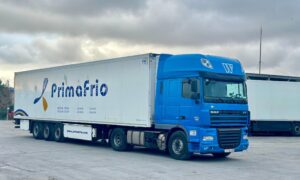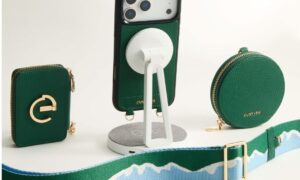Introduction to safety standards for baby furniture
When we welcome a new member into our family, their safety becomes our paramount concern. This instinctive need to protect our little ones extends to every aspect of their lives, including the very furniture they use. Baby furniture, an essential component of nurturing and raising a child, must adhere to stringent safety standards to ensure the well-being of our most precious beings. But what exactly are these safety standards, and why do they matter so much?
Safety standards for baby furniture are a set of guidelines and regulations developed by safety organizations and government bodies. These standards are meticulously designed to minimize risks and prevent accidents, covering everything from structural integrity and stability to the absence of toxic materials. Understanding these safety protocols is the first step in making informed decisions about the furniture we choose for our children’s spaces.
The importance of adhering to these standards cannot be overstressed. With each piece of furniture, whether it’s a wooden baby crib, changing table, or high chair, we must be diligent in ensuring its safety and suitability for our baby’s use. This article aims to guide you through the maze of safety standards, certifications, and what to look for when selecting baby furniture, ensuring you make choices that offer peace of mind and security.
Why safety standards are important for baby furniture
The significance of safety standards in the realm of baby furniture cannot be overstated. We live in a world where unpredictability is the only certainty, and in such a world, ensuring the safety of our children becomes our top priority. But why exactly are these standards so crucial?
Firstly, they serve as a benchmark for quality and safety. Manufacturers who adhere to these standards are committed to producing furniture that not only meets but often exceeds, the minimum safety requirements. This commitment significantly reduces the risks of accidents, providing a safer environment for our children.
Moreover, these standards evolve. As new information comes to light and technological advancements are made, safety standards are updated to reflect these changes. This constant evolution means that certified baby furniture is designed with the most current safety knowledge in mind, offering protection against known risks and hazards.
Finally, the emotional and psychological peace of mind that comes with knowing your baby’s furniture meets established safety standards is invaluable. As parents, we are constantly bombarded with worries and what-ifs. Choosing furniture that complies with these standards alleviates some of this stress, allowing us to focus more on the joys of parenthood.
Common safety hazards in baby furniture
When it comes to baby furniture, several common safety hazards must be vigilantly avoided. These risks can range from the obvious to the not-so-apparent, each carrying the potential to harm.
First among these hazards is the risk of tipping over. Furniture that lacks stability or is top-heavy can easily tip over if a child attempts to climb on it or if it is improperly loaded. This danger underscores the importance of choosing furniture with a sturdy base and following the manufacturer’s guidelines for use and installation.
Another significant hazard is the presence of toxic materials. Lead paint, formaldehyde, and phthalates are just a few of the dangerous substances that can lurk in poorly manufactured furniture. These toxins can have serious health implications for infants and young children, whose bodies are still developing.
Additionally, small parts and sharp edges present a dual threat. Babies and toddlers are naturally curious and tend to explore the world with their mouths. Small, detachable parts can pose a choking hazard, while sharp corners and edges can cause cuts and bruises.
Understanding the different safety certifications for baby furniture
Navigating the world of safety certifications can initially seem daunting. However, understanding these certifications is crucial as they are a testament to a product’s safety and compliance with established standards. Among the myriad of certifications, a few stand out for their rigor and reliability.
The Juvenile Products Manufacturers Association (JPMA) certification is one of the most recognized seals of approval. Products bearing the JPMA certification have undergone rigorous testing to ensure they meet or exceed safety standards set by the American Society for Testing and Materials (ASTM) and the Consumer Product Safety Commission (CPSC).
Similarly, the Greenguard Gold Certification focuses on the chemical emissions from products, ensuring that they meet strict limits for volatile organic compounds (VOCs). Furniture with this certification contributes to a healthier indoor environment, free from harmful chemicals and pollutants.
Another notable certification is the OEKO-TEX Standard 100. This certification guarantees that textiles used in baby furniture, such as the fabric on a high chair or a crib mattress, are free from harmful levels of more than 100 substances known to be detrimental to human health.
Tips for choosing certified baby furniture
Selecting certified baby furniture is a crucial step in creating a safe environment for your child. Here are some tips to guide you in making informed decisions:
- Prioritize Recognized Certifications: Look for furniture that boasts certifications from reputable organizations such as JPMA, Greenguard Gold, or OEKO-TEX. These certifications are a testament to the furniture’s safety and quality.
- Read and Understand the Labels: Certification labels contain valuable information. Take the time to read and understand them, ensuring the furniture meets the specific safety standards you’re looking for.
- Don’t Rely Solely on Price: While it’s tempting to equate higher prices with better quality, this isn’t always the case. Similarly, more affordable options aren’t inherently unsafe. Focus on the certifications and safety features rather than the price tag.
- Research and Reviews: Before making a purchase, conduct thorough research on the product and the manufacturer. Read reviews from other parents and look for any recalls or safety warnings associated with the brand or product.
- Check for Recalls: Stay informed about any recalls related to baby furniture by regularly checking safety websites and the CPSC’s recall list. Ensuring the product you choose hasn’t been recalled for safety concerns is crucial.
By following these tips, parents can make well-informed decisions, choosing baby furniture that not only meets but exceeds safety standards, providing a secure and nurturing environment for their child.
Benefits of purchasing certified baby furniture
Choosing certified baby furniture comes with a host of benefits that extend well beyond the obvious safety assurances. These benefits encompass both immediate and long-term advantages for the child and the family as a whole.
Primarily, certified furniture is designed with the child’s well-being in mind. From non-toxic materials to sturdy construction and safety features like rounded corners and secure latches, these products offer comprehensive protection against common hazards.
Furthermore, investing in certified furniture can lead to substantial cost savings over time. High-quality, safe furniture is built to last, reducing the need for frequent replacements. Additionally, furniture that adheres to safety standards is less likely to be recalled or cause accidents, potentially saving families from costly medical bills or legal issues.
Lastly, purchasing certified baby furniture contributes to a healthier environment for the entire family. Products that limit chemical emissions and are made from sustainable materials not only protect the child but also support the health of the planet.
Popular brands that offer certified baby furniture
Numerous brands have committed to producing baby furniture that meets and surpasses safety standards. Some of the most reputable include:
- Stokke: Known for its innovative designs, Stokke offers a range of baby furniture, including the iconic Tripp Trapp high chair, all designed with safety and quality in mind.
- DaVinci: With a focus on sustainability and safety, DaVinci’s baby furniture, including cribs and dressers, is Greenguard Gold certified.
- IKEA: Offering a wide selection of baby furniture at affordable prices, IKEA commits to strict safety testing and standards, with many of its products boasting various certifications.
- Delta Children: A leading brand in children’s furniture, Delta Children offers a vast array of JPMA-certified products, ensuring safety and quality.
By choosing furniture from these trusted brands, parents can feel confident in the safety and durability of their selections.
Where to buy certified baby furniture
Certified baby furniture is widely available through various channels, both online and in physical stores. Major retailers, including Amazon, Target, and BuyBuy Baby, offer extensive selections of certified products. Specialty baby stores also provide a range of options, often with knowledgeable staff to assist in the selection process.
Additionally, purchasing directly from the manufacturer’s website can be advantageous. This approach not only ensures access to the latest models and designs but also offers detailed information about the safety certifications and standards each product meets.
When shopping for baby furniture, regardless of the source, always verify the product’s certifications and read reviews to ensure it meets your safety and quality expectations.
How to check if a product is certified
Verifying a product’s certification is a critical step in the purchasing process. Look for the certification labels or seals on the product packaging or descriptions. These labels will indicate which standards the furniture meets and which organizations have endorsed it.
For further verification, you can visit the certifying organization’s website. Most, like JPMA and Greenguard, offer searchable databases where you can check if a particular product or brand is certified. This extra step provides reassurance that the furniture you choose meets the highest safety standards.
Conclusion: Ensuring your baby’s safety with certified furniture
In conclusion, choosing certified baby furniture is one of the most significant steps we can take to ensure our children’s safety and well-being. By understanding and adhering to safety standards, being aware of common hazards, and selecting products with recognized certifications, we can create a secure and nurturing environment for our little ones. Remember, the peace of mind that comes from knowing you’ve done everything to protect your child is invaluable. Let’s commit to making informed choices that prioritize their safety above all. In the end, if you’re in the market for infant goods or other items made in China, this buying guide website: www.linkosourcing.com is a must-visit. It links you with reliable manufacturers.





























